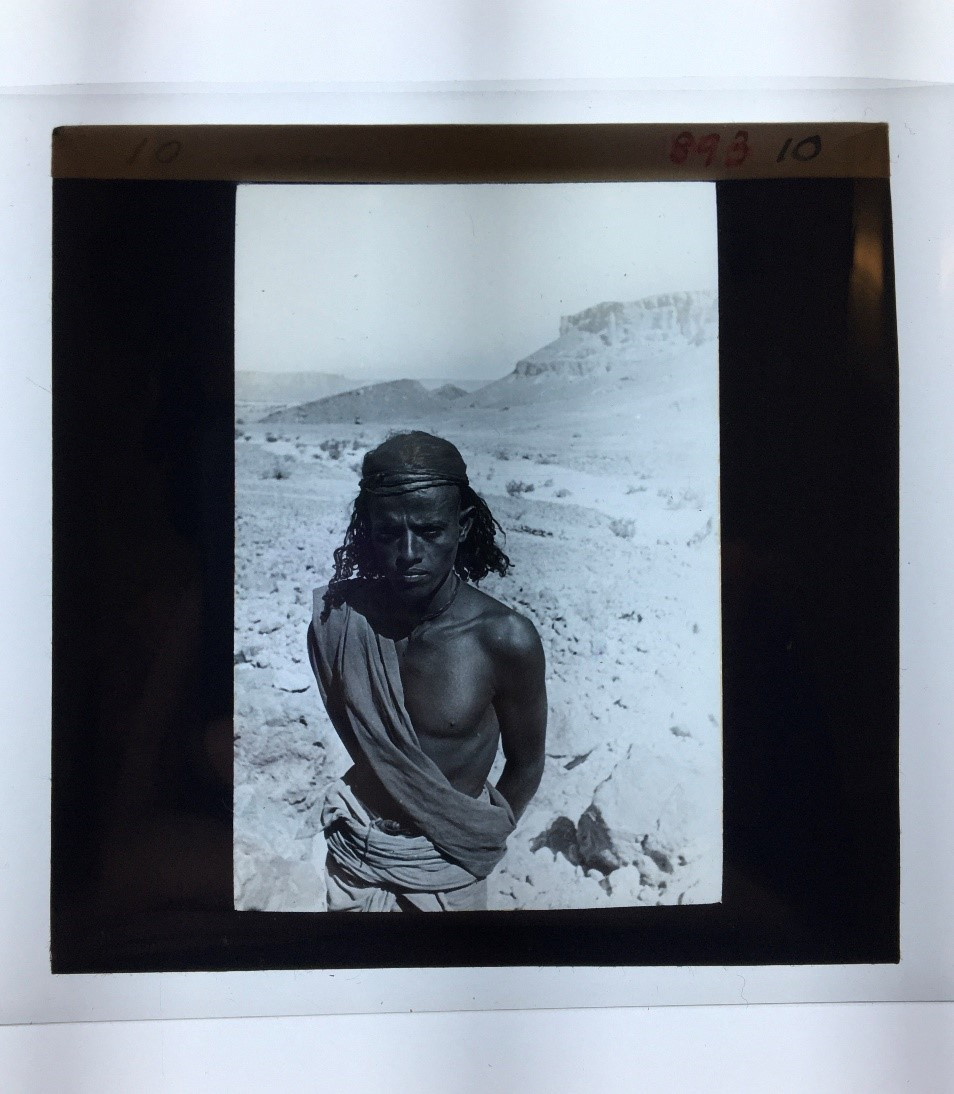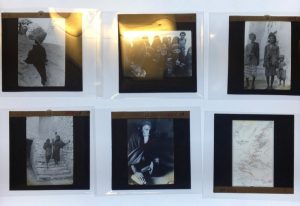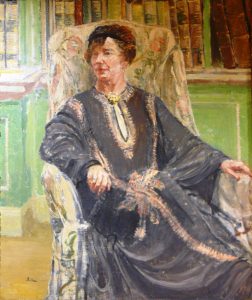The Freya Stark Glass Slide Collection
In the weeks before the Society closed, we were fortunate to be able to host another student from the MA in History of Art and Curation course at Sussex University. Imogen Holmes was working with our glass slides, we meant that we now have 8 of our collections on the online catalogue. Unfortunately, she was unable to finish the placement, but here she shares about working with the glass slides taken by Freya Stark:
The Freya Stark Collection
The Freya Stark collection, now available on the Royal Asiatic Society’s online catalogue, is a new addition to the resources available to researchers. Having worked on the process of archiving and cataloguing the 65 glass slides, I have found many photos published in books in the Society’s collection, however a few still remain a mystery.
The collection of magic lantern slides document Dame Freya Stark’s travels across the Hadhramaut, the area that is now familiar to us as modern-day Yemen. While Stark’s first attempt at this journey was cut short after she fell ill with measles in 1934, she returned shortly later in 1937 to fulfil her mission in becoming one of few Westerners to explore Southern Arabia. Stark documented the journey across the Red Sea to follow ancient frankincense trade routes from Hureidha to Bir’Ali in her book Seen in the Hadhramaut.

Although the Royal Asiatic Society’s collection of Stark’s photographs include important topographical scenes and ancient inscriptions on the walls of great ruins, Stark’s compositions of the locals who aided her journey across the Hadhramaut are particularly insightful. These sensitive portraits capture individuals across Arabian society with equal attention. From camel-men to royalty in ‘Azzan, these photographic slides are the result of her choice to fully embrace custom and live alongside locals. A selection of images that tell the story of the locals had been selected from the archive to be exhibited during the Collections Open Evening on the 17th of March. However due to the Corona Virus Pandemic, the evening was cancelled to be hopefully rescheduled at a later date. The images from left to right and top to bottom were captioned as the following:
1) Girl wearing a Hadhramaut
2) Group of women and children, possibly in Shibham
3) Three generations of the royal family at ‘Azzan (The uncle of the Sultan of ‘Azzan and his son and grandson)
4) Two unnamed women standing on steps, one holding a child
5) The headman of the Ja’da
6) Map detailing Stark’s journey across the Hadhramaut

In recognition for her contribution to travel-writing and geographic exploration, Stark was awarded the Royal Asiatic Society’s Richard Burton Memorial Medal in 1934. Stark died at the age of 100 in 1993. A portrait commemorating her can be seen in the Society’s Lecture Room.

We really enjoyed having Imogen for her placement. She worked hard to make our glass slides more accessible to researchers. It was sad that she was unable to complete all the hours she had been allocated but, in her time with us, she achieved much and worked very conscientiously. The RAS are very grateful to all the placement students we have hosted over the years, and also to our volunteers who enable us to do so much more to make the collections available. I could fill many blog posts with all that has been achieved by our volunteers and interns in the years that I have been archivist.
So though they cannot continue at this time, I want to conclude this blog post by saying a BIG THANK YOU to them all.
